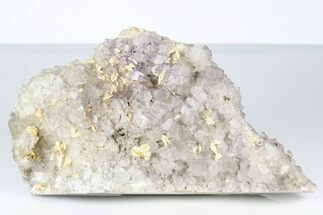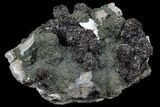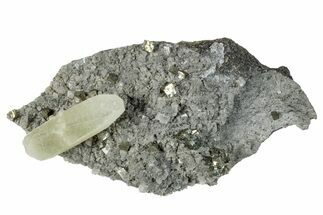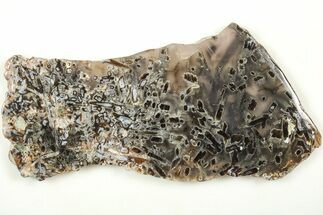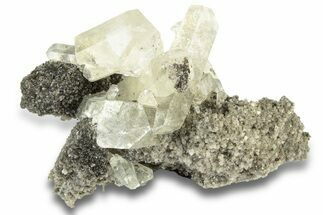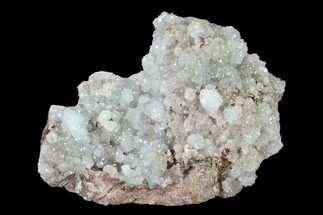This Specimen has been sold.
6.1" Sphalerite, Marcasite, Barite & Quartz Association - Missouri
This beautiful specimen contains an association of glimmering, iridescent druzy marcasite crystals, several deep red sphalerite "flowers", aggregations of white barite and a bed of quartz crystal druze from which the crystals formed. It comes from the Washington County Aggregates Quarry in the Potosi Barite District of Missouri.
Barite sometimes spelled Baryte (Barium sulfate) is well-known for its great range of colors and varied crystal habits. It is easily identifiable by its heavy weight, since most similar minerals are much lighter. It occurs in a large number of depositional environments, and is deposited through a large number of processes including biogenic, hydrothermal, and evaporation, among others
About Quartz
Quartz is the name given to silicon dioxide (SiO2) and is the second most abundant mineral in the Earth's crust. Quartz crystals generally grow in silica-rich environments--usually igneous rocks or hydrothermal environments like geothermal waters--at temperatures between 100°C and 450°C, and usually under very high pressure. In either case, crystals will precipitate as temperatures cool, just as ice gradually forms when water freezes. Quartz veins are formed when open fissures are filled with hot water during the closing stages of mountain formation: these veins can be hundreds of millions of years old.
Quartz is the name given to silicon dioxide (SiO2) and is the second most abundant mineral in the Earth's crust. Quartz crystals generally grow in silica-rich environments--usually igneous rocks or hydrothermal environments like geothermal waters--at temperatures between 100°C and 450°C, and usually under very high pressure. In either case, crystals will precipitate as temperatures cool, just as ice gradually forms when water freezes. Quartz veins are formed when open fissures are filled with hot water during the closing stages of mountain formation: these veins can be hundreds of millions of years old.
Sphalerite is a part of the sulfide group and typically exhibits a grey/black appearance due to high concentrations of impurities. In its purest state, sphalerite's chemical composition is ZnS, and can display a gemmy transparent light tan/yellow color. This is one of the few minerals that can form crystals ranging anywhere between gemmy and transparent to opaque and metallic-like. Opaque or cloudy sphalerite tends to be most abundant since iron easily replaces zinc in the process of formation.
Barite sometimes spelled Baryte (Barium sulfate) is well-known for its great range of colors and varied crystal habits. It is easily identifiable by its heavy weight, since most similar minerals are much lighter. It occurs in a large number of depositional environments, and is deposited through a large number of processes including biogenic, hydrothermal, and evaporation, among others
SPECIES
Sphalerite, Marcasite, Barite & Quartz
LOCATION
Washington County Aggregates Quarry, Potosi Barite District, Washington County, Missouri
SIZE
6.1 x 3.6 x 3.9"
CATEGORY
ITEM
#96397
 Reviews
Reviews


